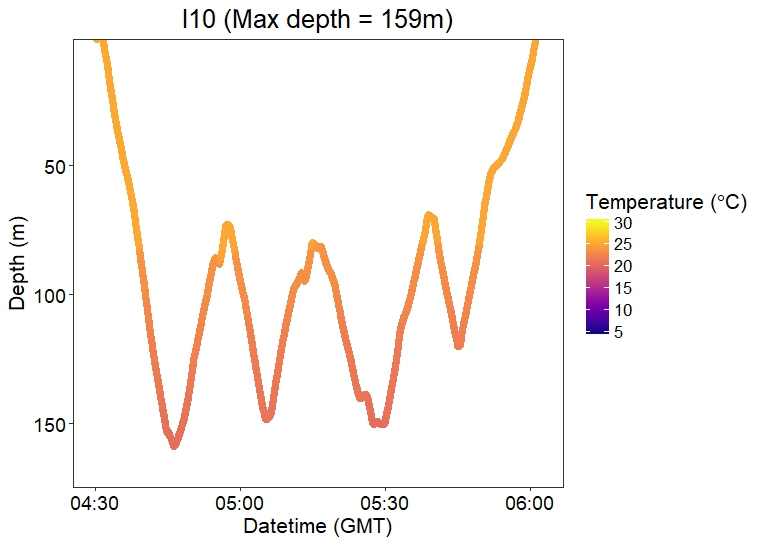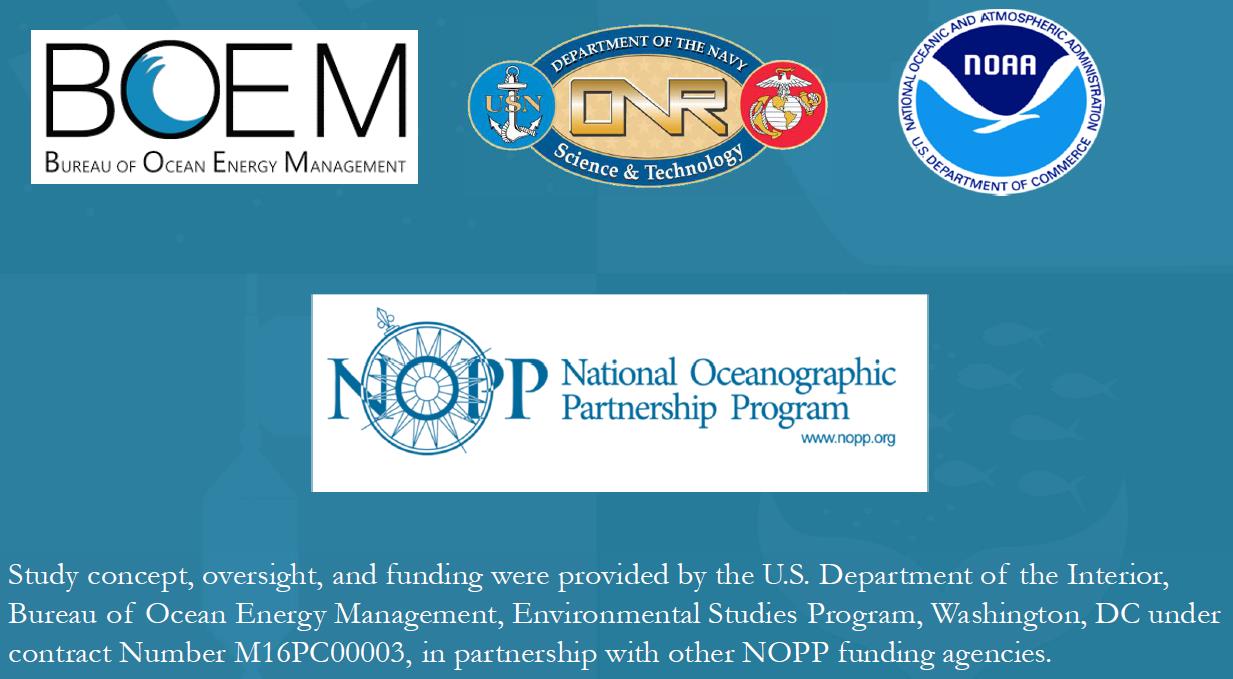Today’s blog is written by Chief Scientist Joe Warren (Stony Brook University).
There is a friendly rivalry between the day and night shifts on the vessel. And while the day shift spends all day looking for deep water, the night shift is busy sending nets down to near the bottom of the ocean to sample the marine life that lives there. One of the biggest challenges that we have when flying a net is that (in many cases) it can be difficult to know how deep your net is in the water. We have meters on the ship's winches that tell us how many meters of wire have been put into the ocean, but since the ship is moving that wire isn't hanging straight down. Instead it forms a curve in the water that is function of sea state, ship speed, net type and design, and whether there are any currents in the water column. Some nets can communicate with the ship via a conducting cable in the wire that they use, but we are towing this net off the ship's trawl wire which doesn't have that capability -- it's just steel.
We have a sensor that we strap to our net to record the time, pressure (which tell us the depth), and the water temperature; so we know where the net was (at least with depth) but not until it's back on board the ship and we can download the data. Luckily for us, the ship has a fancy instrument called a USBL (Ultra Short Base Line array) that they can put on the wire above the net and it acoustically talks to a receiver on the bottom of the RV Armstrong. With this, we get real-time information about the depth of the net which lets us do some pretty cool things -- like flying a net 20 m above the bottom of the ocean floor a half-mile beneath the surface.

|
It takes a lot of coordination between the scientists, the ship's technicians (Amy and Cris are GREAT!), and the bridge crew, but when it works out well, we find some really cool things. Like this the triplewart seadevil (Cryptopsaras couesi), which is a deep sea angler fish! It's about an inch long and we caught it on a tow where the net went down to 820 m. It has a lure that is luminescent that it uses to attract its prey. Only the females have lures, whereas the males of this species are parasitic and attach themselves to females in order to mate. Deep sea fish have very interesting life history strategies.
|
We're doing some more deep tows tonight so who knows what we'll find. And despite us being out on a boat away from friends and family, we are still getting into the holiday spirit in our own unique, shipboard way as evidenced by the decorations going up on the lab walls.
|


